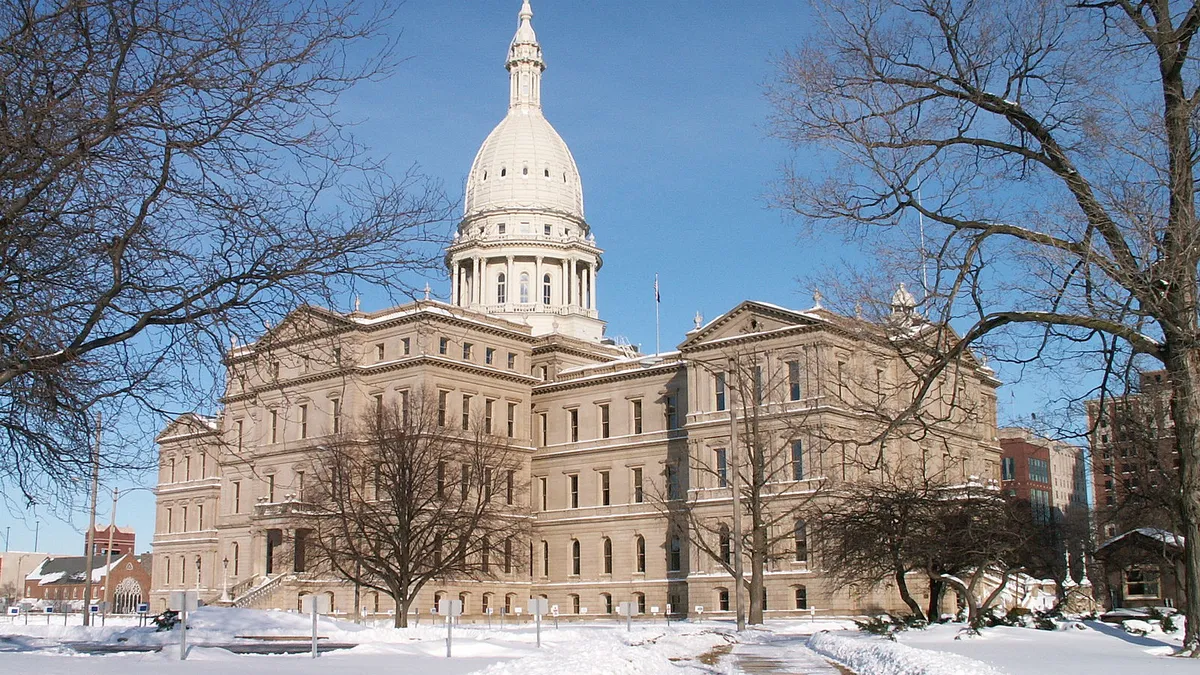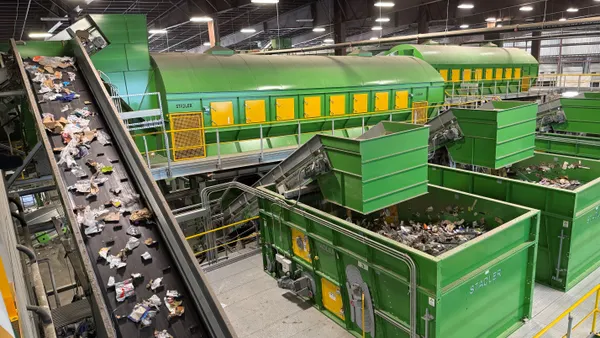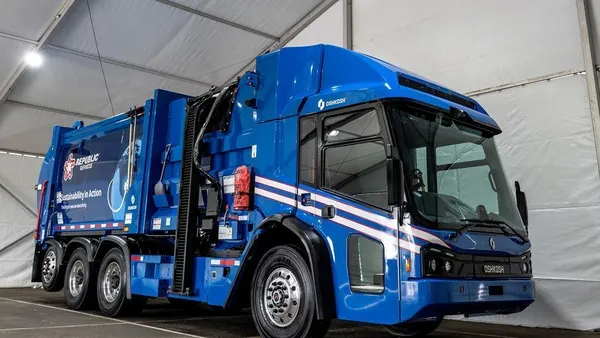Dive Brief:
- According to three new reports, Michigan will need a major reset of state solid waste policy in order to double its current diversion rate to 30%. The first report, prepared by the state's Solid Waste and Sustainability Advisory Panel (SWSAP), includes nearly 30 recommendations for updating the state's existing laws to emphasize diversion over disposal. Among these proposals, SWSAP advocates increasing funds for planning grants from $830,000 to $10 million, changing the way organics processing facilities are regulated and exploring new conversion technologies.
- A separate report from the Governor's Recycling Council (GRC) outlines a broader range of proposals to double the diversion rate under the following categories: launching a statewide education and engagement campaign, developing new materials markets within the state, expanding curbside or drop-off recycling access, establishing a fund to support new recycling initiatives, and using standardized performance measurements. The GRC estimates that implementing all recommendations from both reports would carry a one-time cost of about $2 million and annual cost of $17 million.
- A third outside report from the Michigan Recycling Coalition (MRC) focuses on more organics processing as the best way to achieve the state's diversion rate goal. Aside from a yard waste ban, the state doesn't currently have an organics diversion policy. Along with calling for increased infrastructure spending and expanded support for food donation the MRC also hints at the benefits of new statewide diversion requirements.
Dive Insight:
Governor Rick Snyder set the 30% diversion rate goal in 2014, leading to the establishment of both the GRC and SWSAP shortly after. The two groups, comprising a range of state officials and industry representatives, have been working in conjunction with the Michigan Department of Environmental Quality on these parallel recommendations for multiple years. The goal is to implement changes in tandem through legislation within the next two years at the earliest.
It is currently estimated that up to $368 million worth of recyclable materials are sent to landfills or waste-to-energy facilities in the state every year and diverting all of that could lead to an even larger economic boost while creating more than 2,600 jobs. The host of proposals for turning this situation around are complex, though two main themes are the need to rethink planning and permitting systems in conjunction with investing large sums in new infrastructure.
According to SWSAP, current state law requires local governments to focus too much on ensuring they have adequate refuse disposal capacity rather than looking at ways to expand diversion opportunities. The report calls for county and regional agencies to review their plans every five years to better address that. Other states, such as Maryland, have recently begun to look at new ways to regulate composting facilities and anaerobic digesters to better recognize these new diversion priorities.
As noted by the MRC report and others, a healthy network of organics diversion options do currently exist in the state but much more capacity will be needed. The same goes for recycling facilities and the types of manufacturing end markets that can help support them. The GRC report identified the potential for nearly $493 million in necessary capital expenditures on a range of facilities to support these goals. Governor Snyder has also established an infrastructure commission that could tie into these plans.
The need for new investment in recycling infrastructure has been repeatedly highlighted in recent years as more states and municipalities set higher diversion rate goals. While the upfront costs can be high, the potential to capture more than 1 million tons of new material in Michigan every year could be appealing enough for companies to invest if they're aided by the type of state incentives that have been proposed.














